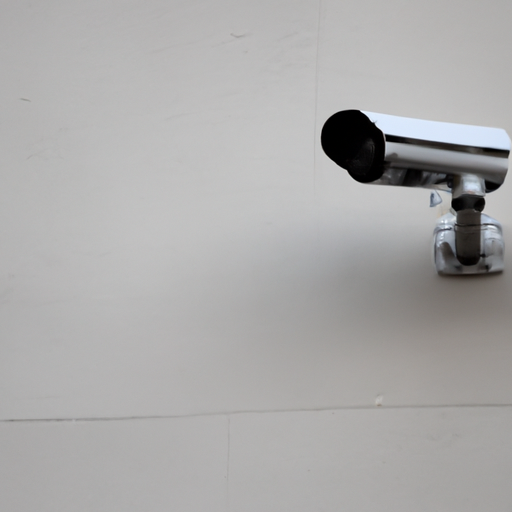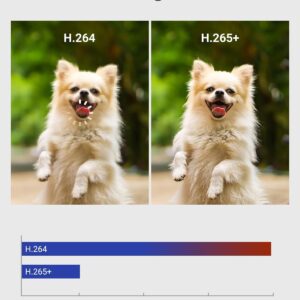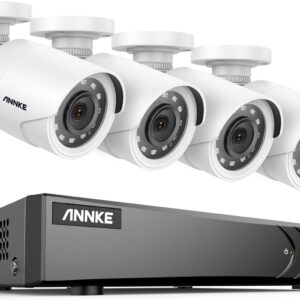In today’s fast-paced world, where we are constantly on the go, the need for peace of mind when it comes to home security is more important than ever. With remote monitoring technology, you can now keep track of your home from anywhere, giving you the ultimate peace of mind. Whether you’re at work, on vacation, or simply running errands, this innovative solution allows you to stay connected and in control of your home’s security, ensuring that your loved ones and belongings are safe at all times. Say goodbye to constant worry and hello to the convenience and peace of mind that remote monitoring and home security provide.
1. What is remote monitoring?
1.1 Definition
Remote monitoring refers to the practice of using technology to monitor and manage various aspects of a system or environment from a remote location. It involves the use of sensors, cameras, and other devices to collect data and transmit it to a central location where it can be monitored and analyzed.
1.2 How does it work?
Remote monitoring works by utilizing a network of sensors and devices that are connected to a central monitoring system. These sensors can be placed in various locations within a home or property and are designed to detect changes or abnormalities in the environment.
When a sensor detects something unusual, it sends an alert to the central monitoring system, which then notifies the homeowner or a professional monitoring service. This allows for quick response and action in the event of a security breach or other emergency situation.
1.3 Benefits of remote monitoring
There are several benefits to implementing remote monitoring:
-
Increased security: Remote monitoring provides an added layer of security to protect your home and loved ones. With constant surveillance and real-time alerts, you can quickly respond to any potential threats or emergencies.
-
Peace of mind: Knowing that your home is being monitored and protected even when you’re not there can give you peace of mind. Whether you’re at work, on vacation, or simply away from home, remote monitoring allows you to stay connected and informed about the safety of your property.
-
Enhanced convenience: Remote monitoring systems often offer features that make managing your home security easier and more convenient. From accessing live video feeds to controlling security devices remotely, these systems provide a level of control that traditional security systems cannot match.
-
Potential cost savings: In some cases, implementing remote monitoring in your home security system can lead to insurance discounts. Insurance providers recognize the added security and reduced risk of break-ins or other incidents when remote monitoring is in place, leading to potential savings on your premiums.
2. Home security systems
2.1 Overview of home security systems
Home security systems are designed to protect your home, belongings, and loved ones from intruders and other threats. These systems typically include a combination of sensors, cameras, alarms, and monitoring capabilities to detect and respond to potential security breaches.
2.2 Importance of home security
Home security is crucial for several reasons. Firstly, it helps deter burglars and intruders, reducing the risk of break-ins and theft. Secondly, it provides a sense of safety and peace of mind for homeowners and their families. Lastly, a secure home can also help lower homeowner’s insurance premiums.
2.3 Types of home security systems
There are several types of home security systems available, including:
-
Alarm systems: These systems include sensors that detect unauthorized entry or movement and trigger an audible alarm. They may also include features like motion detectors, glass break sensors, and door/window sensors.
-
Surveillance systems: Surveillance systems use cameras to monitor and record activity in and around a property. They can provide both live video feeds and recorded footage for review.
-
Access control systems: Access control systems are designed to regulate and control who can enter a property or specific areas within it. They often utilize key cards, keypad entry codes, or biometric identification for access.
-
Smart home security systems: These systems integrate with other smart home devices and can be controlled remotely through a smartphone or other connected device. They may include features such as remote monitoring, automated lighting, and smart locks.
3. Remote monitoring in home security
3.1 Integration of remote monitoring
Remote monitoring can be seamlessly integrated into existing home security systems. By adding remote monitoring capabilities, homeowners can enhance the functionality and effectiveness of their security system.
3.2 Features of remote monitoring in home security
Remote monitoring in home security offers several key features:
-
Live video feeds: With remote monitoring, homeowners can access live video feeds from their security cameras at any time. This allows them to visually check on the status of their property and monitor any suspicious activity.
-
Real-time alerts: Remote monitoring systems can send real-time alerts to homeowners’ smartphones or other devices when a sensor is triggered or a security breach is detected. This instant notification enables prompt action and response.
-
Remote control: Many remote monitoring systems allow homeowners to control their security devices remotely. This includes arming or disarming the alarm system, controlling surveillance camera positioning, and managing access to the property.
4. Peace of mind from anywhere
4.1 Constant surveillance
One of the greatest benefits of remote monitoring in home security is the ability to have constant surveillance over your property. Whether you are at work, on vacation, or simply out for the day, you can have peace of mind knowing that your home is being monitored 24/7.
4.2 Real-time alerts
Another advantage of remote monitoring is the ability to receive real-time alerts. If a security breach or abnormality is detected, you will receive an immediate notification on your smartphone or other device. This allows you to take quick action, whether it’s contacting authorities or checking the live video feed to assess the situation.
4.3 Accessible from anywhere
Remote monitoring systems provide accessibility from anywhere with an internet connection. Whether you are across town or across the globe, you can easily access your home security system and stay connected to your property. This flexibility and convenience make remote monitoring an ideal solution for homeowners who travel frequently or have multiple properties to manage.
5. Benefits of remote monitoring in home security
5.1 Enhanced protection
Remote monitoring enhances the protection of your home by providing an extra layer of security. With constant surveillance and real-time alerts, you can quickly respond to any potential threats or emergencies. This proactive approach can help prevent or minimize the damage caused by burglaries or other security incidents.
5.2 Deterrence of burglaries
Visible surveillance cameras and the presence of a remote monitoring system can serve as a strong deterrent to potential burglars. Criminals are less likely to target a home that is actively monitored and protected. The mere presence of remote monitoring can significantly reduce the risk of break-ins and theft.
5.3 Insurance discounts
Implementing remote monitoring in your home security system may make you eligible for insurance discounts. Many insurance providers offer lower premiums to homeowners who have advanced security systems in place. By demonstrating a commitment to securing your property, you can potentially save on your insurance costs.
6. Remote monitoring technologies
6.1 Video surveillance systems
Video surveillance systems are a key component of remote monitoring in home security. These systems utilize cameras to capture live video footage of your property. The footage can be accessed remotely, allowing you to monitor your home in real-time. Advanced surveillance systems may also include features like motion detection and night vision.
6.2 Mobile applications
Mobile applications play a critical role in remote monitoring. These apps allow homeowners to access their security systems from their smartphones or tablets. With a user-friendly interface, you can view live video feeds, receive real-time alerts, and control various security devices from anywhere.
6.3 Smart home integration
Remote monitoring can be seamlessly integrated with smart home devices. This integration allows for more holistic and convenient control over your home security system. For example, you can integrate your surveillance cameras with smart locks and automated lighting to create a comprehensive security solution.
7. Choosing a remote monitoring system
7.1 Determine your needs
Before choosing a remote monitoring system, it’s important to determine your specific needs. Consider factors such as the size of your property, the level of security you require, and your budget. By understanding your needs, you can choose a system that best fits your requirements.
7.2 Research available options
Research is crucial when selecting a remote monitoring system. Examine different brands and models, read customer reviews, and compare features and prices. Look for systems that have a good reputation for performance, reliability, and customer support.
7.3 Consider professional vs. DIY systems
When choosing a remote monitoring system, you’ll need to decide between a professional installation or a do-it-yourself (DIY) setup. Professional installations often come with a higher upfront cost but may offer more comprehensive support and advanced features. DIY systems, on the other hand, are typically more affordable and offer greater flexibility for customization.
8. Installation and setup
8.1 Hiring professionals
If you opt for a professional installation, a team of experts will handle the entire process. They will assess your property, recommend the best system, and install the necessary devices. Professional installations ensure that the system is set up correctly and in line with industry standards.
8.2 DIY installation
For homeowners who prefer a hands-on approach, DIY installation is a viable option. DIY systems come with detailed instructions and often require minimal tools and technical knowledge. While it may take a bit more time and effort, DIY installation allows for greater customization and cost savings.
8.3 Connecting devices
Regardless of the installation method, connecting devices is a crucial step. This involves linking your security cameras, sensors, and other devices to your central monitoring system. Follow the manufacturer’s instructions carefully to ensure proper connectivity and functionality.
9. Tips for maximizing remote monitoring
9.1 Utilize advanced features
To maximize the benefits of remote monitoring, take advantage of advanced features offered by your system. This may include features like motion detection, facial recognition, and geofencing. By customizing your settings and utilizing these features, you can tailor the system to suit your specific needs and preferences.
9.2 Optimize camera placement
Proper camera placement is essential for effective remote monitoring. Consider placing cameras at strategic locations, such as entry points, high-traffic areas, and areas with valuable assets. Additionally, ensure that cameras have clear views and are not obstructed by foliage, walls, or other objects.
9.3 Regularly update firmware
Remote monitoring systems often receive firmware updates that improve functionality, security, and performance. It is important to regularly check for and apply these updates to ensure that your system is operating at its best. These updates may include bug fixes, new features, and improved compatibility with devices and software.
10. Security and privacy concerns
10.1 Data encryption
To protect your data and ensure that it remains secure, choose a remote monitoring system that utilizes strong encryption. Encryption is the process of encoding information to prevent unauthorized access. Look for systems that use industry-standard encryption protocols to safeguard your information.
10.2 Secure network connection
A secure network connection is vital for remote monitoring. Ensure that your home network is protected with a strong password and encrypted Wi-Fi. Avoid using default passwords and regularly update your network equipment to prevent unauthorized access.
10.3 Personal information protection
When choosing a remote monitoring system, consider the privacy policies and data handling practices of the manufacturer. Ensure that they have strict security measures in place to protect your personal information. Review their privacy policy to understand how your data will be used and stored.
In conclusion, remote monitoring offers an effective and convenient solution for enhancing home security. With constant surveillance, real-time alerts, and accessibility from anywhere, homeowners can enjoy peace of mind knowing that their property is protected. By understanding the benefits, selecting the right system, and following best practices, remote monitoring can provide comprehensive security and peace of mind from anywhere.




